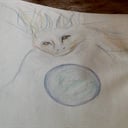What is a quire a measurement of?
A quire of paper is a measure of paper quantity. The usual meaning is 25 sheets of the same size and quality: 1⁄20 of a ream of 500 sheets. Quires of 25 sheets are often used for machine-made paper, while quires of 24 sheets are often used for handmade or specialised paper of 480-sheet reams. (As an old UK and US measure, in some sources, a quire was originally 24 sheets.) Quires of 15, 18 or 20 sheets have also been used, depending on the type of paper.
In the Middle Ages, a quire (also called a "gathering") was most often formed of 4 folded sheets of vellum or parchment, i.e. 8 leaves, 16 sides. The term "quaternion" (or sometimes quaternum) designates such a quire.
A quire made of a single folded sheet (i.e. 2 leaves, 4 sides) is a "bifolium" (plural "bifolia"); a "binion" is a quire of two sheets (i.e. 4 leaves, 8 sides); and a "quinion" is five sheets (10 leaves, 20 sides). This last meaning is preserved in the modern Italian term for quire, quinterno di carta.
Formerly, when paper was packed at the paper mill, the top and bottom quires were made up of slightly damaged sheets ("outsides") to protect the good quires ("insides"). These outside quires were known as "cassie quires" or "cording quires" and had only 20 sheets to the quire.
More Info:
en.wikipedia.org









